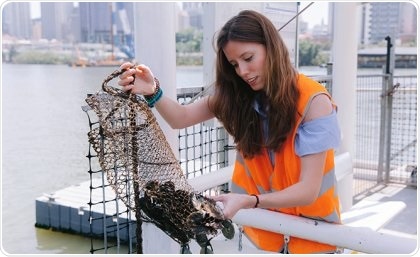Levels of plastic contamination have been found in samples of popular seafood such as prawns, oysters, and crabs, with the highest content found in sardines, according to University of Queensland research.
Lead author Ph.D. candidate Francisca Ribeiro from UQ’s Queensland Alliance for Environmental Health Sciences said the study was an important step to understanding the potential harm microplastics in seafood could have on human health.
“We found polyvinyl chloride – a widely used synthetic plastic polymer – in all samples we tested, but the most common plastic in use today – polyethylene – was the highest concentrate we found,” Ms. Ribeiro said.
“From the edible marine species tested, sardines had the highest plastic content, which was a surprising result.
“Another interesting aspect was the diversity of microplastic types found among species, with polyethylene predominant in fish and polyvinyl chloride, the only plastic detected in oysters.”
Microplastics are tiny pieces of plastic that pollute the marine environment and are eaten by organisms of all types, from small larvae and planktonic organisms to large marine mammals.
Studies to date show that microplastics not only enter our diet from seafood but also bottled water, sea salt, beer, and honey, as well the dust that settles on our meals.

UQ study lead Francisca Ribeiro checking the state of oysters deployed at the Brisbane river
The UQ research team found the total plastic concentration detected in each species was 0.04mgs in squid, 0.07mgs in prawns, 0.1mg in oysters, 0.3mgs in crabs, and 2.9mgs in sardines.
The method developed and used by the UQ research team is a significant step forward for plastic quantification techniques in seafood, as it allows results to be reported in a mass unit that hasn’t been done before.
“We can now define what microplastic levels can be considered harmful to human health,” Ms. Ribeiro said.
The next phase of the research project is to identify the sources of the plastic contamination found in the seafood tested.
The study has been published in Environmental Science & Technology.
Francisca Ribeiro is currently completing a Ph.D. in the field of environmental toxicology, with a shared scholarship between UQ and the University of Exeter.
Journal reference:
- Francisca Ribeiro, Elvis D. Okoffo, Jake W. O’Brien, Sarah Fraissinet-Tachet, Stacey O’Brien, Michael Gallen, Saer Samanipour, Sarit Kaserzon, Jochen F. Mueller, Tamara Galloway, and Kevin V. Thomas Environmental Science & Technology 2020 54 (15), 9408-9417 DOI: 10.1021/acs.est.0c02337, https://pubs.acs.org/doi/pdf/10.1021/acs.est.0c02337